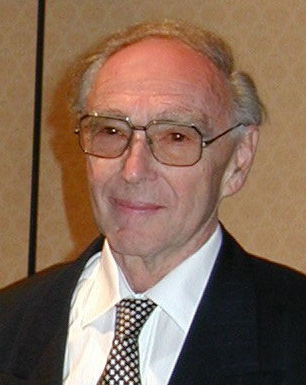STRIKING FEATURES in Physics
|
B. Physics of ion sources and coupling of ECRIS to
particles accelerators
C. Development of ECRIS and their applications
A. Vacuum techniques
Development of Helium spectrometer (1954)
Worldly mass production (50,000
specimens) device produced by Thomson, Alcatel, Leybold, Balzers etc…
Still produced to this day, used
worldwide for very-low-density vacuum
systems, and still used in labs.
Construction of the first turbo-molecular pump
Mass production under the label
CEA/SNECMA (100,000 specimens) by Alcatel, Leybold, Balzers, and various
American, Japanese, Chinese societies, and more.
B. Physics of ion sources and coupling of
ECRIS to particles accelerators
Invention of
the first ion source based on electron cyclotron resonance in 1965 (ECRIS)
Development of numerous ECRIS
prototypes, some of them being used in industrial applications for surface
treatment. Conception of the first ECRIS for multicharged ions (1974) and
progressive improvements of its performances until today (miniaturization
thanks to permanent magnets, and then thanks to superconductors, and increase
of produced energies, that made possible the adaptability of these sources to
very different applications). This last activity had far-reaching repercussions
in various fields of fundamental research. It led to a new nuclear physics
(heavy ions) and made it possible to launch new research in atomic physics.
Usage
This type of highly-ionized source, allows to increase spectacularly the energy
of boosted ions without modifying the structure of the accelerators, i.e.
without increasing the price of the experiments. Thus, a number of old
accelerators underwent a real revival, and developed new activities. Generally
speaking, thanks to this source, the big international accelerators such as
GANIL, MSU, GSI, etc… were able to produce new isotopic elements. Since 1980,
almost all the accelerators worldwide (cyclotrons, synchrotrons, linacs, …) got
equipped with ECRIS, 30 of them were directly produced in Grenoble and then used
in the European Community, the USA, Russia, the CERN, China, Japan, and more.
Since 1985, international teams of hundreds of physicists work with these beams
of heavy ions in order to probe the standard model and the theory of the Big
Bang. This led to new research in the field of the physics of heavy particles,
and to empirically approach the physics of high energies involved in the Big
Bang, and the physics of the beginning of our universe. For instance, the CERN
replacing its classical ion sources by an ECRIS moved from 200 GeV for protons
in 1985 to about 90 Tev for Lead ion in
1994 (i.e. about a 500 multiplicative factor) without spending any money and
with a totally reliable source. The CERN was thus able to tackle the Big Bang
physics (gluons and quarks high lightening), a mystery that excites the minds
of more than just strange particles physicists. Studies are scheduled to start
in 2008 at the LHC (Large Hadron Collider)
at the CERN with 600 Gev Pb27+ ions.
C. Development of ECRIS and their applications
|
|
|
Field lines from an
ECRIS ion source |
ECRIS reliability and longevity
allowed uninterrupted use of intense and highly-charged beams, making possible
the discovery of super-heavy trans-uranium of the Mandeleev table (110, 111, 112, 114, 116, and 118 in 2006)
and of new isotopes (Berkeley, GSI, Doubna). Also, without any accelerator,
ECRIS sources allowed a revival of atomic physics in which hundreds of
physicists are active on the long-term in more than 20 laboratories.
The more recent discovery of the
1+/n+ method shall permit worldwide new studies on ISOL radioactive ions (and
among others, research in astrophysics). In particular at the CERN, new
radioactive ion beams are replacing Penning Traps in the Rex Isolde program
because they make it possible to increase the number of rare event 10000 times
in comparison with classical devices.
In the late seventies, I wanted ECR
sources to be part of cancers cure thanks to the very high precision that was
obtained and that made possible to pinpoint cancerous tumors without destroying
surrounding cells. Since 1994, ECRIS are indispensable sources for cancer
therapy through heavy ions (HIMAC) for tumors known until then as incurable
such as brain tumors. They were first used in Chiba (Japan), then at the GSI
Darmstadt and will be in application in the coming years in Heidelberg, Padova,
Lyon and other European hospitals are in development.
The ECRIS sources have often
replaced the classical ions sources in various fields such as surface
treatments, ionic implantation, micro-etching and are progressing into
high-tech fields such as microelectronics (etching over large surfaces with
scales smaller than a few tens of nm) or nanotechnologies. This was made
possible thanks to the increase of performances, reliability and
miniaturization of the sources, which then made possible the adaptation of the
sources to various technological applications.
Finally ECR sources are taken in
consideration for various applications, for example by the NASA for ionic space
propulsion, ordinary-temperature metallurgy, or for low-cost water purifying in
developing countries.

